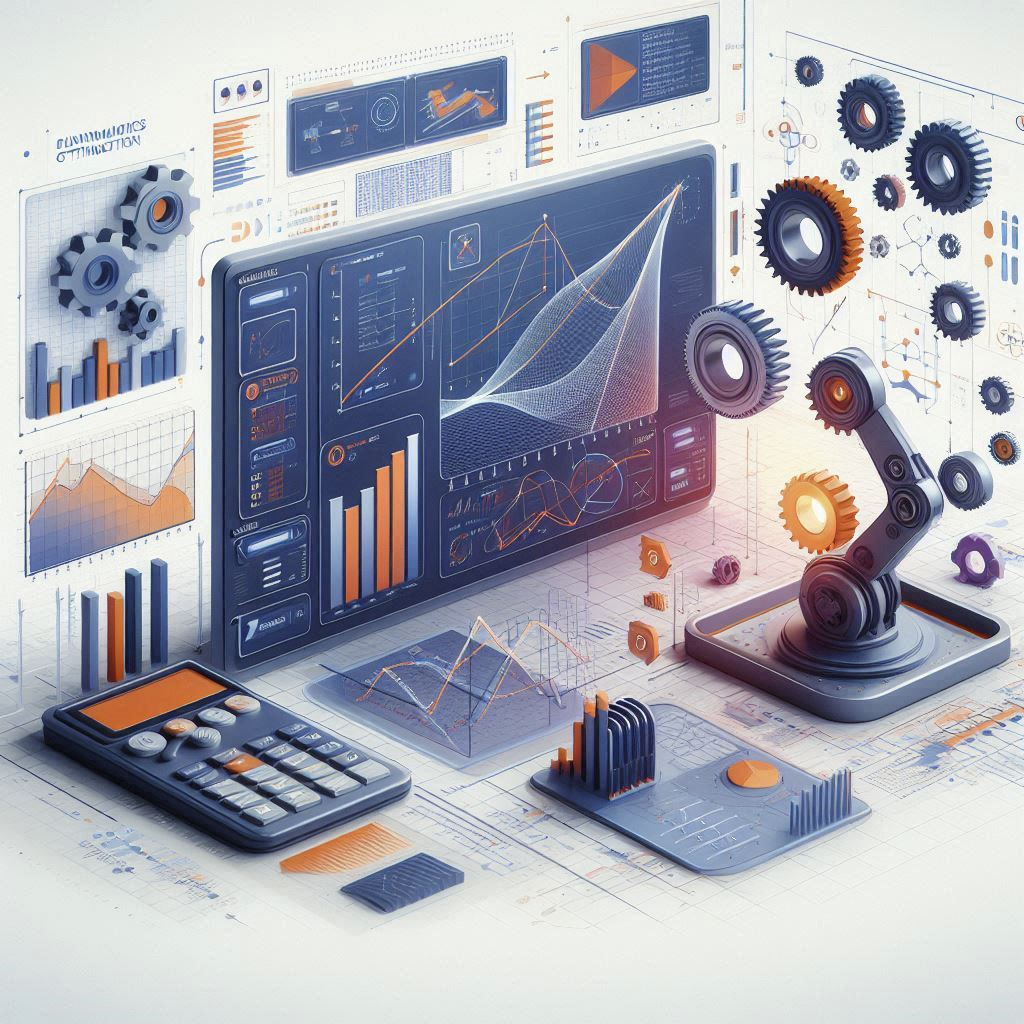Gradient Descent in Dynamics Optimization: AI and Cloud Computing Impact
Introduction to Gradient Descent in Cloud Computing and AI
Gradient descent, cloud computing, and artificial intelligence (AI) are transforming dynamics optimization. These technologies enable the study of dynamic systems while optimizing performance criteria under changing conditions. In this blog, we will explore how numerical methods, particularly gradient descent, supported by cloud computing and AI, play a crucial role in solving complex optimization problems. In the UAE, these technologies are rapidly advancing, driving innovation in multiple industries.
The Role of Gradient Descent, Cloud Computing, and AI in Dynamics Optimization
Gradient descent, along with cloud computing and AI, plays a fundamental role in solving differential equations that describe dynamic systems. These technologies provide approximate solutions where exact answers are impractical. In dynamics optimization, it is particularly useful for:
Modeling Dynamic Systems
Dynamic systems are often modeled using differential equations. Cloud computing enables real-time simulations of these systems, while AI enhances predictions. It further refines models by adjusting parameters to minimize error and improve accuracy.
Optimization of Performance Criteria
The goal of dynamics optimization is to find the best solution that maximizes or minimizes a performance criterion. It also helps identify optimal parameters efficiently, while cloud computing facilitates large-scale computations.
Handling Nonlinearities
Many dynamic systems exhibit nonlinear behavior, making them difficult to analyze. AI techniques, combined with gradient descent, effectively manage these complexities by iteratively refining solutions to achieve optimal performance.
Real-time Applications
In many engineering fields, real-time optimization is crucial. Cloud computing provides scalable resources, enabling AI and gradient descent algorithms to dynamically adjust parameters based on live data.
Key Numerical Methods in Dynamics Optimization
Several numerical methods, enhanced by cloud computing and AI, are widely used in dynamics optimization. It is among the most critical techniques, alongside other methods such as:
Finite Difference Methods (FDM)
FDM approximates solutions to differential equations by discretizing them. This approach is effective for solving ordinary and partial differential equations.
Advantages:
– Simple to implement
-Useful for a wide range of problems
Disadvantages:
-Requires careful selection of step sizes
-Less accurate for stiff equations
Finite Element Methods (FEM)
FEM is a powerful numerical technique used to divide complex systems into smaller elements for analysis.
Advantages:
Handles complex geometries effectively
Provides high accuracy
Disadvantages:
Computationally intensive
Requires significant expertise
Gradient Descent for Optimization
It is a widely used optimization algorithm in dynamics optimization. It iteratively adjusts parameters to minimize a loss function.
Stochastic Gradient Descent (SGD): Processes data in small batches, making it ideal for real-time applications.
Batch : Uses the entire dataset to compute the optimal update direction.
Adaptive (Adam, RMSprop): Enhances performance by adjusting learning rates dynamically.
Advantages:
– Efficient for large-scale problems
– Works well with nonlinear systems
Disadvantages:
– May converge slowly
– Can get stuck in local minima
Dynamic Programming (DP)
DP is useful for solving multi-stage decision problems.
Advantages:
– Provides exact solutions for structured problems
– Effective in sequential decision-making
Disadvantages:
– Computationally expensive
– Requires well-defined problem structures
Applications of Gradient Descent in Dynamics Optimization
The combination of gradient descent, cloud computing, and AI is transforming various industries in the UAE, including:
Robotics
Gradient descent optimizes robotic motion planning and control strategies, improving efficiency and obstacle avoidance.
Aerospace Engineering
In aerospace, gradient descent aids in optimizing flight paths, reducing fuel consumption, and enhancing structural design.
Mechanical Systems
Mechanical engineering benefits from numerical optimization techniques like gradient descent for improving component design and system efficiency.
Automotive Engineering
It enhances vehicle performance by optimizing parameters such as fuel efficiency and safety features.
Civil Engineering
Structural optimization, particularly in earthquake-resistant buildings, relies on it and other numerical methods.
Challenges in Implementing Gradient Descent in Cloud Computing
Computational Complexity
Large-scale dynamics optimization problems require significant computational power. Cloud-based gradient descent helps distribute workloads efficiently.
Convergence and Stability
Poorly chosen learning rates can cause it to diverge. AI-driven techniques help fine-tune parameters for stable optimization.
Modeling Accuracy
Accurate models are crucial for reliable optimization. It refines predictions by continuously updating parameters.
Integration with Other Systems
Optimizing real-world applications requires seamless integration of it with cloud computing, AI, and other numerical methods.
Conclusion
Cloud computing, artificial intelligence, and gradient descent are transforming dynamics optimization. These technologies refine numerical models, optimize performance, and enable real-time decision-making.
The increasing computational power of cloud platforms will further enhance gradient descent, driving innovation across industries. As a result, numerical methods in mechanical system dynamics will continue to evolve, improving real-world applications.
The future of gradient descent in dynamics optimization is promising, with advancements expected in robotics, aerospace, mechanical engineering, and beyond.
Do you like to read more educational content? Read our blogs at Cloudastra Technologies or contact us for business enquiry at Cloudastra Contact Us.
